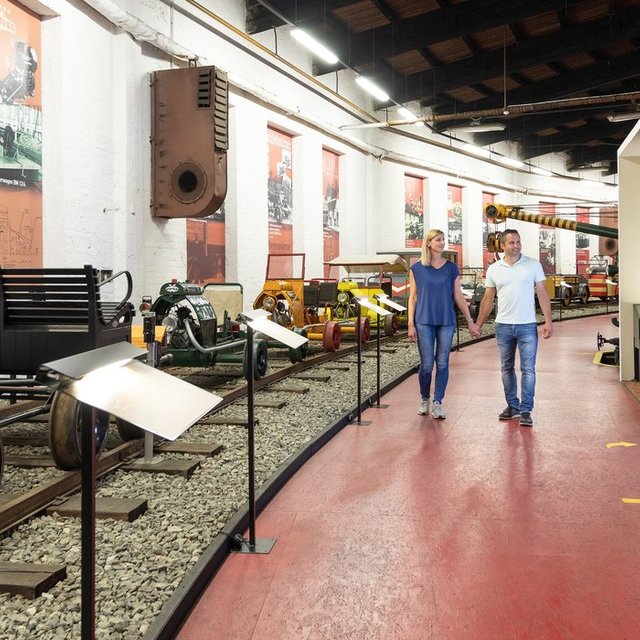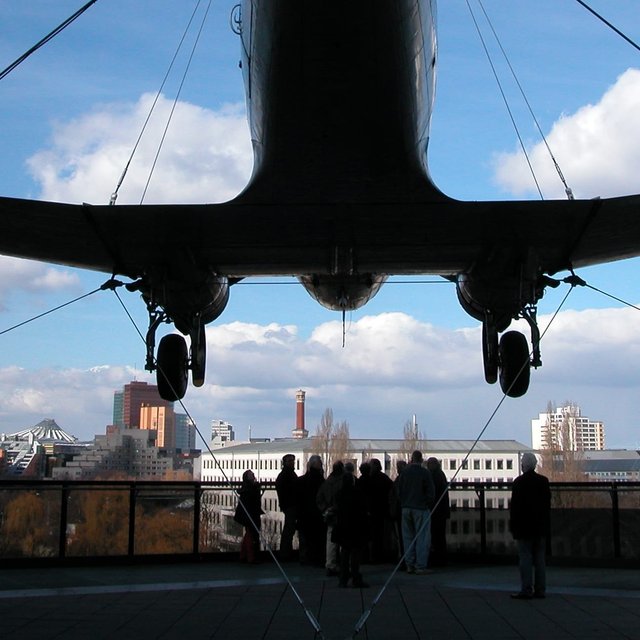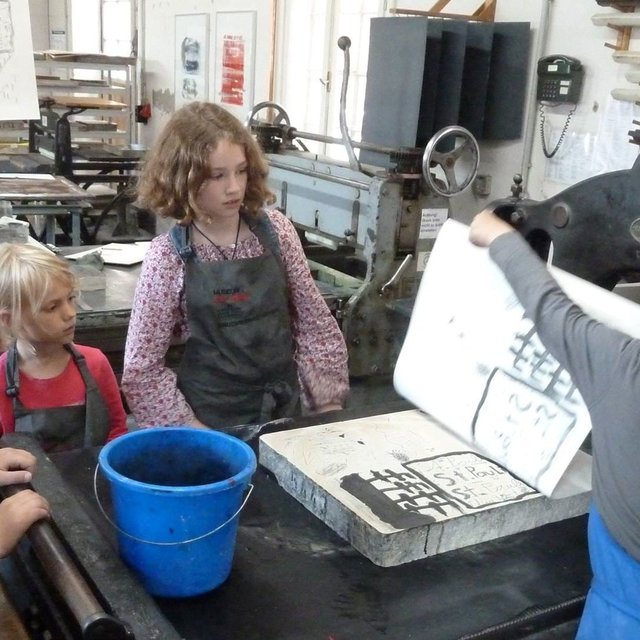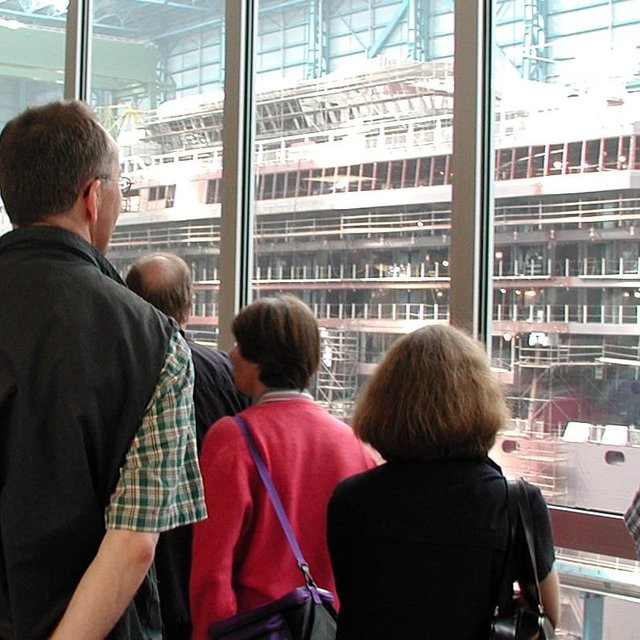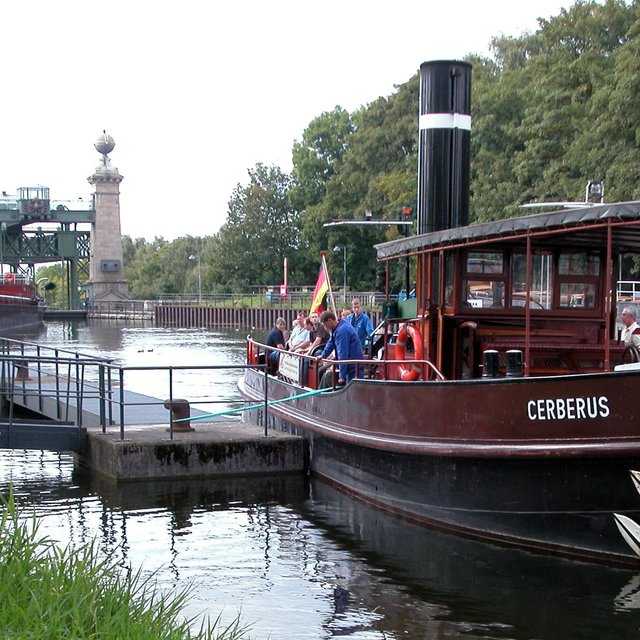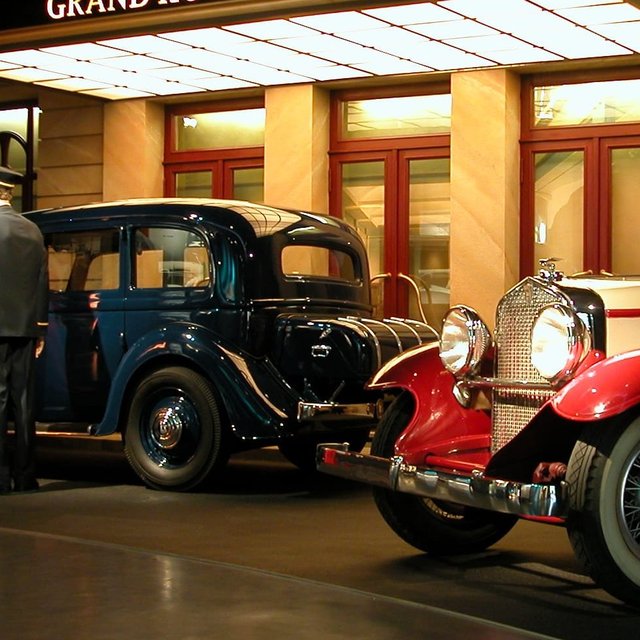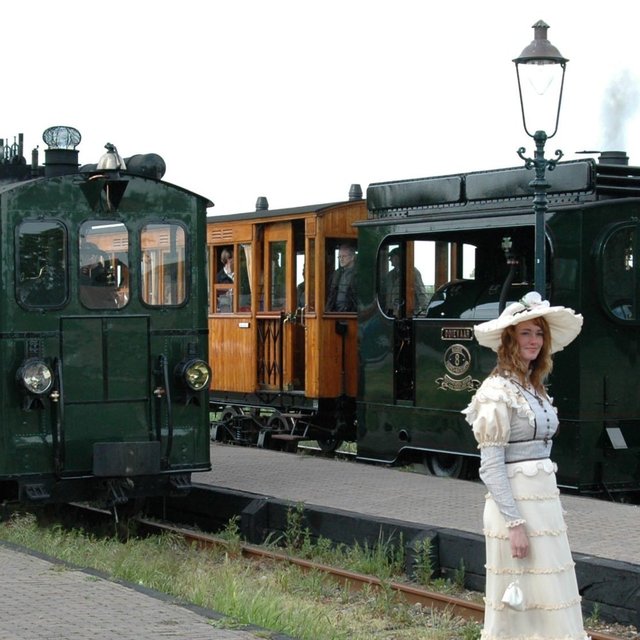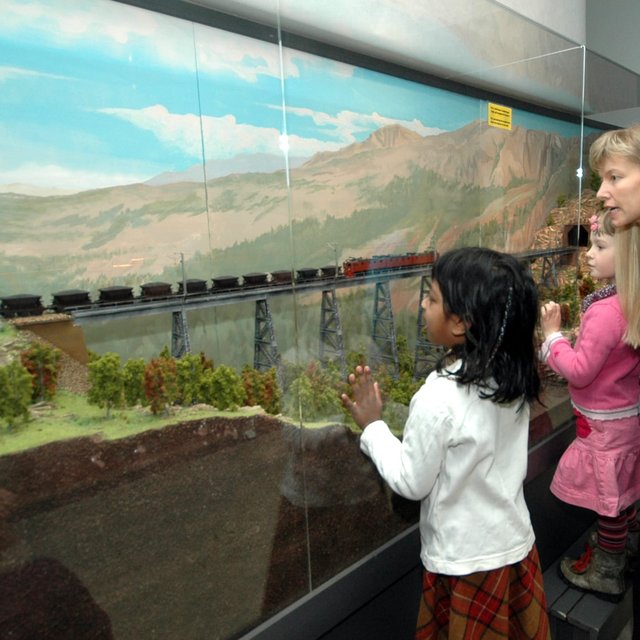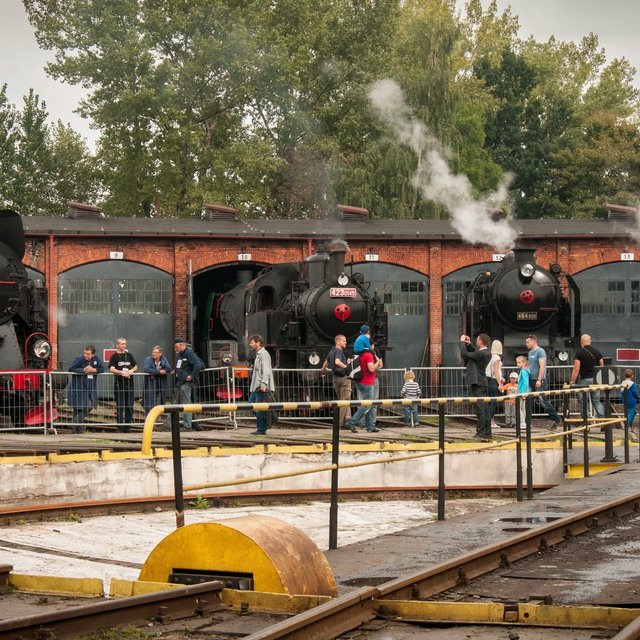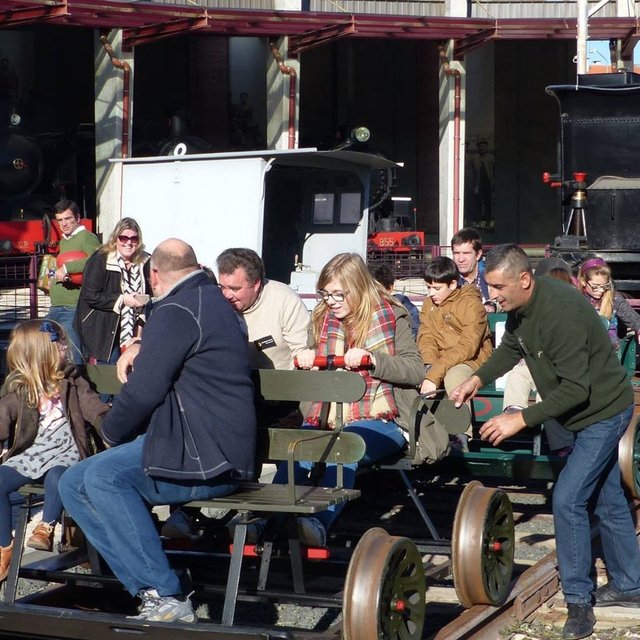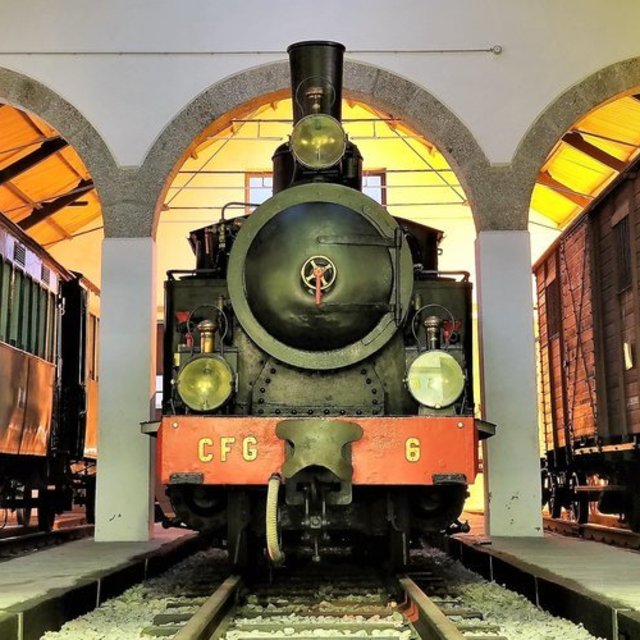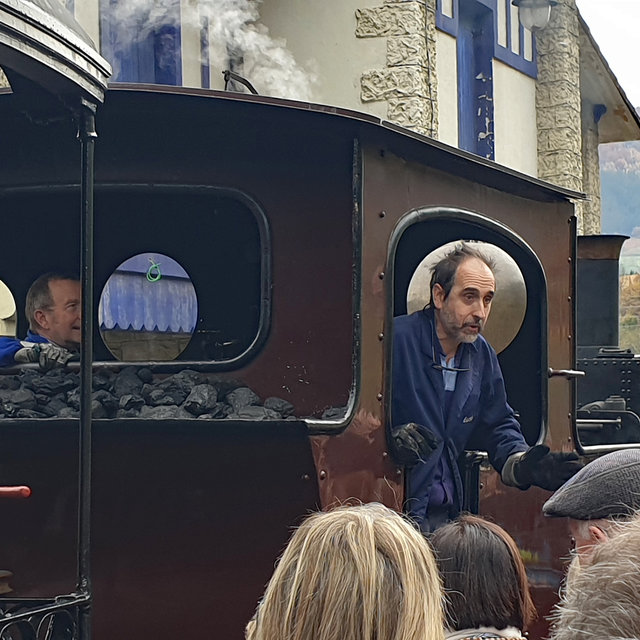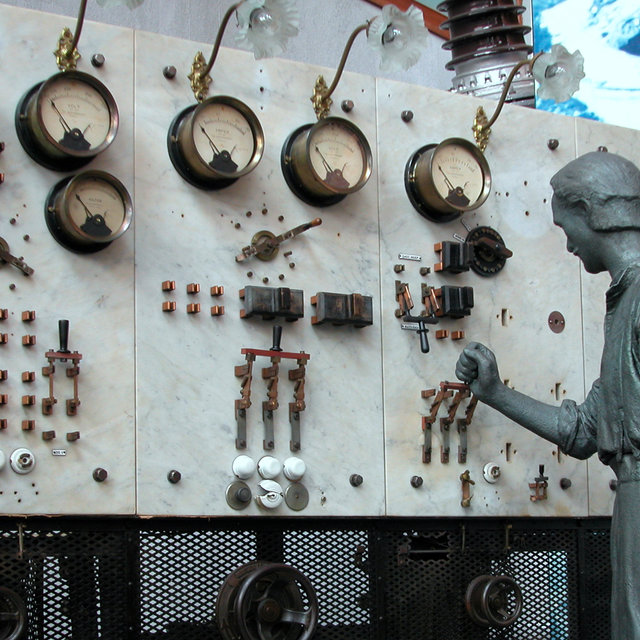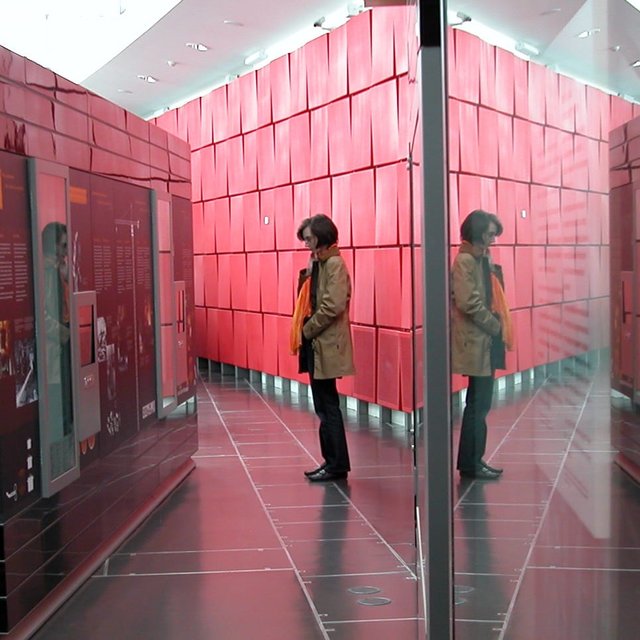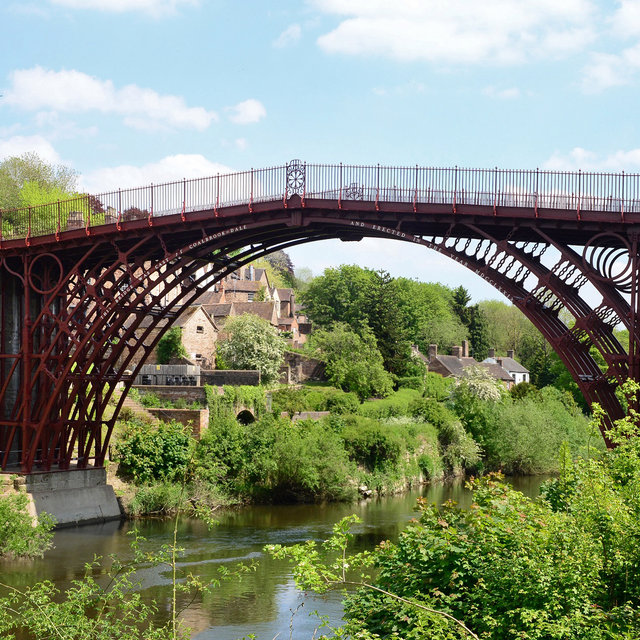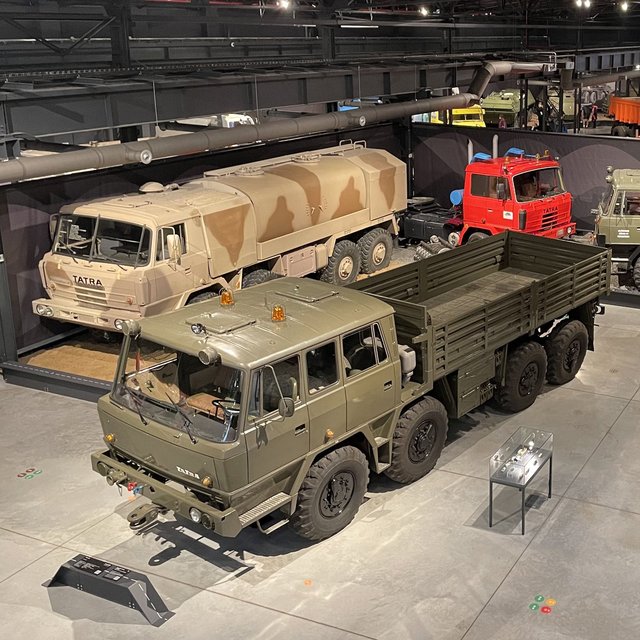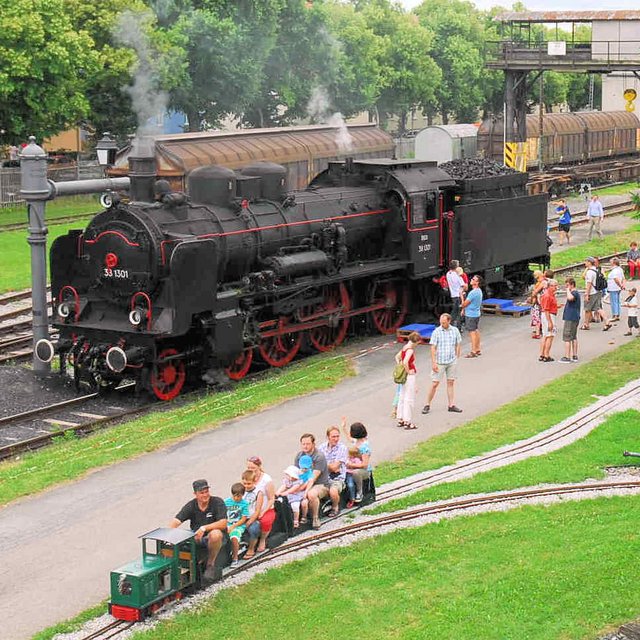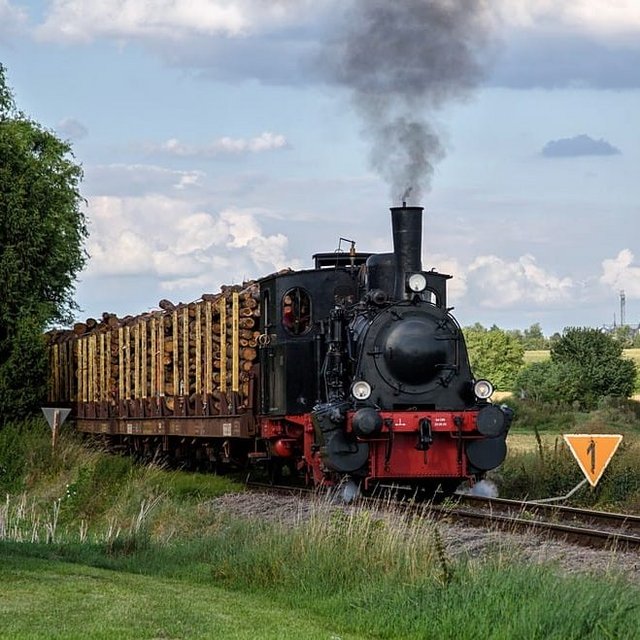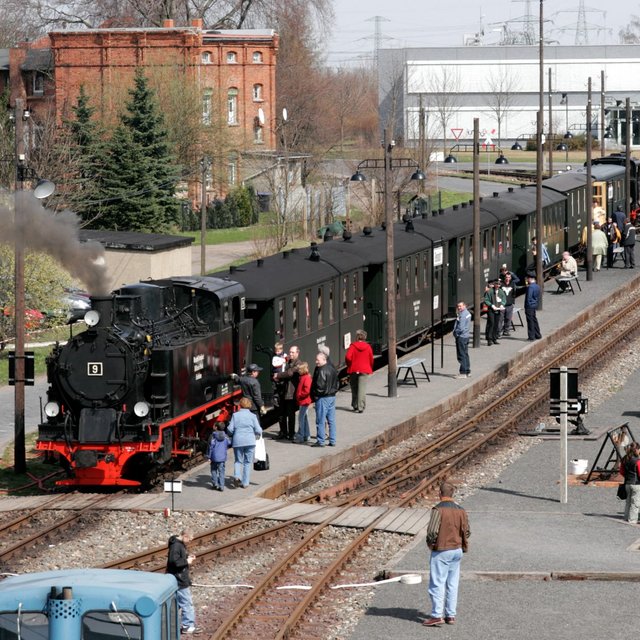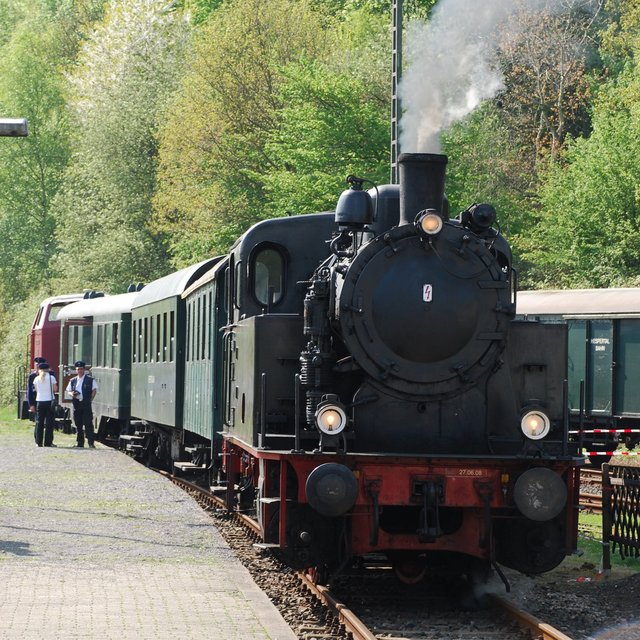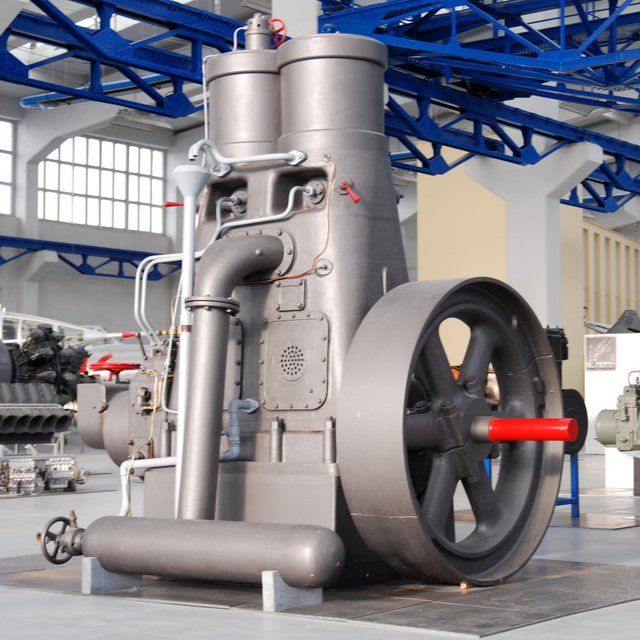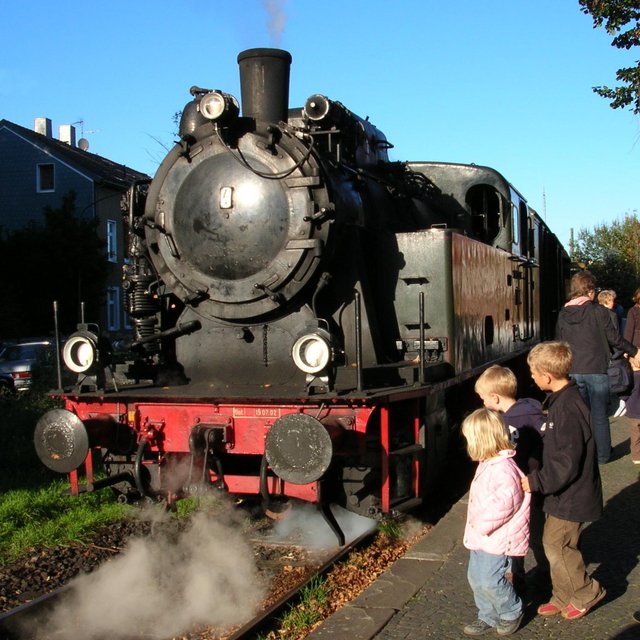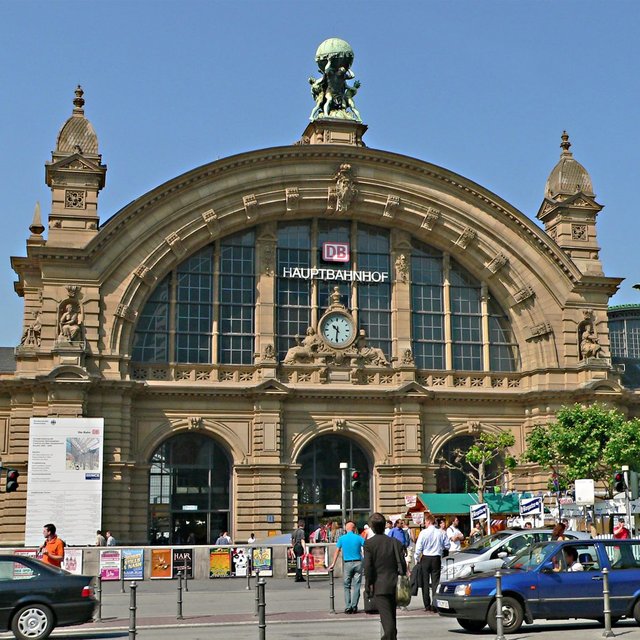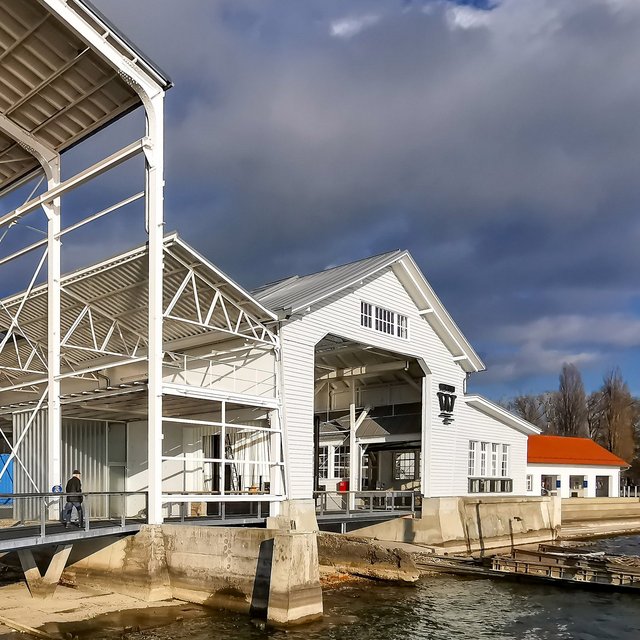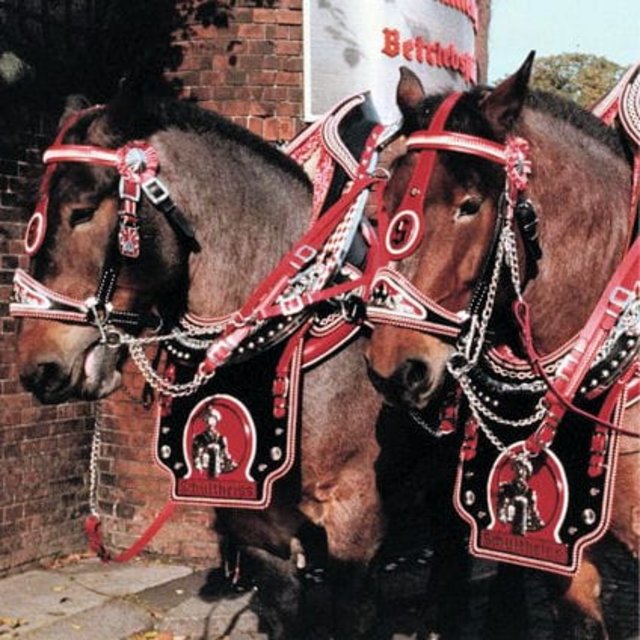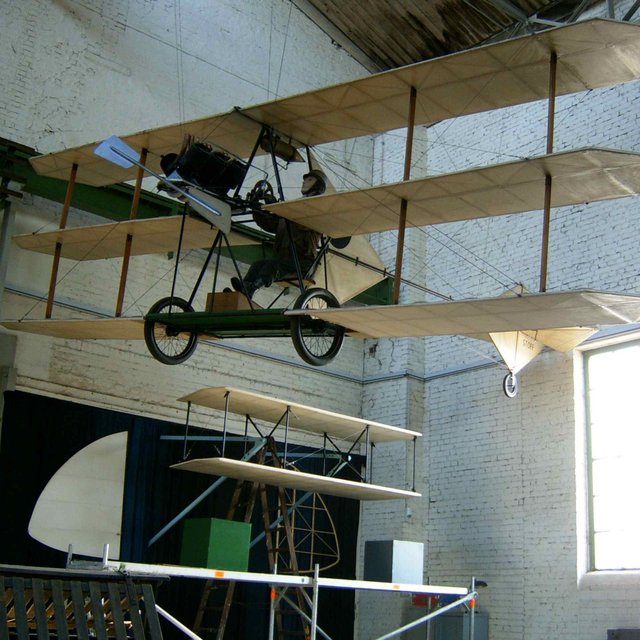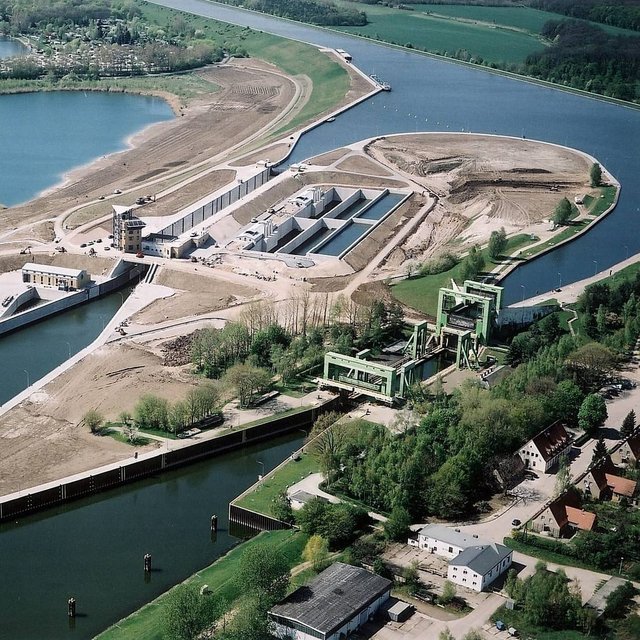European Themeroute | Transport
During the early years of the Industrial Revolution there was a radical change in transportation. The arrival of pounding steamships and steam locomotives gave a huge boost to industrialisation. The change began on the canals which, for centuries, had proved to be the best means of transporting goods. In ... more
 The tracks of the Industrial Revolution. European Theme Route Transport
The tracks of the Industrial Revolution. European Theme Route Transport
During the early years of the Industrial Revolution there was a radical change in transportation. The arrival of pounding steamships and steam locomotives gave a huge boost to industrialisation. The change began on the canals which, for centuries, had proved to be the best means of transporting goods. In 1761, the Bridgewater canal was completed in one of the birthplaces of the industrial age, the British textile area Lancashire; from then on, the route supplied the booming city of Manchester with coal. Other canals followed quickly, enabling coal to be transported to textile factories and iron mills in all the major cities in Britain.
The steam engine triggered off the revolution in transport. The first experiments with the technology date back to 1690, when a French physicist by the name of Dennis Papin designed a steam-driven boat with bucket wheels. But it was not until a century later that practical experiments took place both in France and Britain. Nevertheless it was an American, Robert Fulton, who succeeded in building the first steamship – even before the first locomotive took to the rails. The "Clermont", a flat bottomed boat with two huge bucket wheels and a steam engine, was launched into the Hudson River in 1807.
In 1827 an Austrian forest engineer, Joseph Ressel, took out a patent on a screw propeller. This only really became commercially viable in 1845 after the "Great Britain" had crossed the Atlantic, driven by a ca. 5 metre screw propeller. About the same time people stopped building ships made of wood, because iron hulls were cheaper to construct, could take greater loads and withstand rough seas more easily. A gigantic new market had been opened for the ironmaking industry.
Railways gave the other great boost to industrialisation. They were first used in collieries, where goods wagons ran on wooden rails. About the middle of the 18th century horse-driven railways were running, both above and below the surface, on rails completely made of iron. The first steam-driven wagon was made by the French artillery officer, Nicolas Cugnot around 1770. He was followed by the Englishman, Richard Trevithick, who set his vehicle on rails. In 1803 the first colliery locomotive went into action in Coalbrookdale. This gave rise to George Stephenson's classic steam engine: the front part consisted of a large steam boiler, behind which worked the driver and the stoker; within the engine were a huge amount of horizontal heating pipes, and the steam was blown out at the front. Steam cylinders and pistons were mounted beneath on either side in order to drive the wheels directly.
Stephenson also built the first railway line in England. In 1825, the Stockton and Darlington Railway was opened, and the subsequent railway boom resulted in an explosive growth in the whole of the British economy.
Just as railway mania was beginning to die down, a new development began: the motorcar engine. This revolutionised road traffic completely - primarily, however, on the continent and in the USA. Inventors started by trying to eradicate the disadvantages of the steam engine, which lost a lot of energy because the steam was created in the boiler but used separately in the operating cylinder. Therefore people started experimenting with burning the fuel directly in the operating cylinder. The obvious fuel seemed to be gas (produced from coal), for this was used for street lighting in many places. The first working gas engine was built in 1859 by a citizen of Luxembourg, Étienne Lenoir. He blew an explosive mixture of gas and air into a horizontal cylinder, alternately left and right of the pistons, and ignited it with an electric spark. Since both the mechanical stress and the fuel consumption were very high, the world had to wait until 1876 when the first really marketable internal combustion engine was launched by the German travelling salesman, Nicolaus August Otto.
Otto’s époque-making idea was the four-stroke principal. On the first stroke (intake) the piston descends, and a mixture of gas and air is sucked into the cylinder; on the second (compression), the piston rises and compresses the fuel-air mixture. This is then ignited electrically, and the resulting expansion of burning gases drives the piston downwards (power). On the fourth stroke (exhaust), the piston rises once again and pushes the waste fuel from the cylinder.
Rudolf Diesel's engine, however, was even more efficient. The German engineer based his findings on those of the French physician, Sadi Carnot. His motor sucked in pure air into the cylinder. And because this can be more highly compressed than a mixture, it heats up strongly. Only then is the fuel injected. Because of the high temperature, this ignites automatically, thereby driving the piston in the same way as in the Otto motor. Diesel's engine was presented to the world in 1897, and proved to be both durable and economic. It was possible to get several thousand horsepower from it. The result was that it replaced steam engines in small power stations and was soon built into ships. That said, the high compression demanded a robust construction, so that for a long time the motor was too heavy for locomotives and motor cars.
In the 1870s it was discovered that oil products could be used as engine fuel, because they could easily be gasified: the heavy oil components in diesel motors, the light ones in Otto motors. Now that an alternative had been found to coal gas, people were no longer dependent on a stationary gas connection. There were no more obstacles in the way of the triumphant march of new, mobile internal combustion engines.
Otto’s four-stroke motor was first put into motion in 1885 in a three wheel car made by the Mannheim constructor, Carl Benz; and a wooden motorbike made by Gottfried Daimler and Wilhelm Maybach. In the following years these two German engineers presented the first four-wheeled motorcar, which they had developed from a coach. It was driven by a single-cylinder motor with a 0.5 litre piston displacement and a performance of 1.5 horsepower. The vehicle became commercially viable on the French market where large engineering and assembly works had taken over motor manufacturing. Thanks to producers like Peugeot, Panhard & Levassor and Renault the first motorcar boom in France occurred at the turn of the century.
Further improvements soon made driving more comfortable. In 1888 an Irish vet, John Boyd Dunlop, invented rubber tyres (at first for bicycles); in 1902 the German company Robert Bosch invented sparkplugs, and in 1911 in the USA, an electric starting motor. Maybach’s 1901 "Mercedes" model contained a pioneering example of a motorcar engine: a four-cylinder, four-stroke 35 hp engine which could accelerate the car to a speed of 72 km an hour.
Motorcar production had already become an important manufacturing branch in industrial countries when Henry Ford conquered the mass market. He deliberately set out to build a cheap everyday car for farmers in the mid-west, the Ford model T. Sales rose like lightning, bringing with them revolutionary methods of production. As early as 1911 assembly line production began in the British Ford works in Manchester. In 1914 the complete Ford factory in Detroit was operating on the assembly line system.
Related links
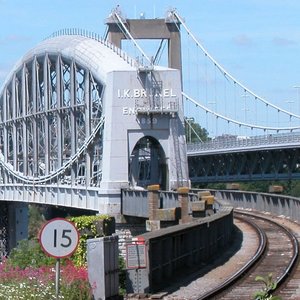
ERIH Anchor Points
Südbahnmuseum
Heizhausgasse 2
8680
Mürzzuschlag, Austria
German Technical Museum
Trebbiner Strasse 9
10963
Berlin, Germany
Saxon Museum of Industry | Chemnitz Museum of Industry
Zwickauer Straße 119
09112
Chemnitz, Germany
Zeppelin Museum
Seestrasse 22
88045
Friedrichshafen, Germany
Museum of Work
Wiesendamm 3
22305
Hamburg, Germany
Meyer Shipyard
Papenburg Tourismus GmbH
Ölmühlenweg 21
26871
Papenburg, Germany
The Henrichenburg Ship Lift
Am Hebewerk 2
45731
Waltrop, Germany
August Horch Museum
Audistraße 7
08058
Zwickau, Germany
MuCa - Museum of Shipbuilding Industry
MuCa - Museo della Cantieristica
Via del Mercato, 3
34074
Monfalcone, Italy
Hoorn-Medemblik Steam Tram Museum
Museum Stoomtram
Van Dedemstraat 8
1624 NN
Hoorn, Netherlands
Museum Nord - Narvik
Administrasjonsveien 3
8502
Narvik, Norway
Railway Museum of Silesia
Muzeum Kolejnictwa na Śląsku
Towarowa 4
58-140
Jaworzyna Śląska, Poland
National Railway Museum Entroncamento
Museu Nacional Ferroviario
Rua Eng. Ferreira de Mesquita
2334-909
Entroncamento, Portugal
National Railway Museum at Lousado
Museu Nacional Ferroviário – Núcleo Museológico de Lousado
Largo da Estação no 2
4760-626
Lousado, Portugal
Basque Railway Museum
Museo Vasco del Ferrocarril
Julián Elorza, 8
20730
Azpeitia, Spain
Asturian Railway Museum
Museo del Ferrocarril de Asturias
Plaza Estación del Norte s/n
33212
Gijón, Spain
National Museum of Science and Technology of Catalonia
Museu Nacional de la Ciència i la Tècnica de Catalunya (MNACTEC)
Rambla d’Ègara 270
08221
Terrassa, Spain
National Waterfront Museum
Oystermouth Road
SA1 3RD
Swansea, United Kingdom
Iron Bridge World Heritage Site
Ironbridge Gorge Museum Trust
Coach Road
Coalbrookdale
TF8 7DQ
Telford, United Kingdom
Member Sites ERIH Association
Tatra Truck Museum
Muzeum nákladních automobilů Tatra
Husova 1326/13
74221
Kopřivnice, Czech Republic
Railway Park
Firnhaberstraße 22c
86159
Augsburg, Germany
Wetterau Heritage Railway
Eisenbahnfreunde Wetterau e. V.
Am Goldstein 12 (Lokschuppen)
61231
Bad Nauheim, Germany
The Mansfeld Works Railway Line
Hauptstraße 15
06308
Benndorf, Germany
Bochum-Dahlhausen Railway Museum
Dr.-C.-Otto-Straße 191
44879
Bochum, Germany
Dessau Technical Museum
Kühnauer Straße 161
06846
Dessau-Roßlau, Germany
Hespertal Railway
Prinz-Friedrich-Platz 3
45257
Essen, Germany
Central Station
Am Hauptbahnhof 1
60329
Frankfurt am Main, Germany
Bodan Wharft
Bodanstraße
88079
Kressbronn am Bodensee, Germany
Draught Horse Transportation Museum
World of Heavy Horses
Museum für die Arbeit mit Zugpferden
Alte Salzstraße 29
21483
Lütau, Germany
Magdeburg Technical Museum
Dodendorfer Straße 65
39112
Magdeburg, Germany
Water Crossroads / Rothensee Boat Lift
Am Schiffshebewerk
39106
Magdeburg, Germany
Museum of Industrial Culture
Äußere Sulzbacher Straße 62
90317
Nuremberg, Germany


